Would you like to import exclusive tiles from China for your projects to save half costs?Tiles made in China are most sought after in the world because of their extraordinary quality. China has become the leading global manufacturers of tiles because of the materials and technology, cost-effective solutions in production, and huge domestic and regional potential markets.
Many importers opt to import tiles from China because the cost of production is at least 50% lower in China than in other countries.This is because,most countries in the world do not have an anti-dumping duty on China tiles. Tile exporters in China are also entitled to a 13% tax refund from the Chinese government depending on the type of tile and the supplier.
The most common complaint of China-made tile importers is how to choose the best tile supplier in China with the highest quality and at competitive prices. There are over 3,000 tile suppliers in China and most of them have a production output of about 25,000 square meters of tiles per day.
If you are planning on importing tiles from China, this guide will be extremely useful.
How to import tile from China- Quick Links
1、Classification of Tile Produced in China
2、Choosing the Right China Tiles
3、China Tiles Design & Specifications Guide
4、Where to Find Tile Manufacturers and Suppliers in China?
5、What Kind of Tile Will Bring You Business?
6、Importing Ceramics Tiles for Your Projects – 6 Things You Need to Know
7、Frequently Asked Questions about China Tiles
8、How to Import Tiles from China?
1、Classification of Tile Produced in China
When you import tiles from China, you may feel confused because there are many tile descriptions. Even the same kind of tile has several names. Below we category tiles by materials and applications for your better understanding about tiles and how they can be used.
1.1 Types of Tiles Based on Materials
1.1.1 Ceramic Tiles
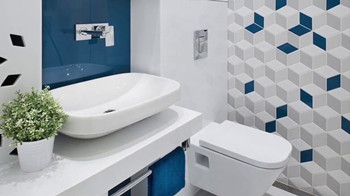
Ceramic tiles come in hundreds of styles that can match any design of your home or room. Ceramic tiles are available at great price points.
1.1.2 Porcelain Tiles
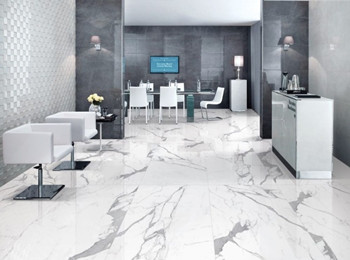
Porcelain tiles can be used indoors and outdoors because they will not crack, fade, or freeze. These tiles are ideal for kitchen floors and backsplashes, bathrooms, and high-traffic areas.
1.1.3 Marbles Tiles
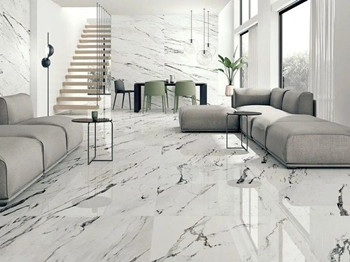
Marble tiles require a lot of maintenance because they are prone to stains and scratches unless they are applied with a sealant. They can also be difficult to clean. Marble tiles are ideal for low-traffic areas.
1.1.4 Wood Tiles
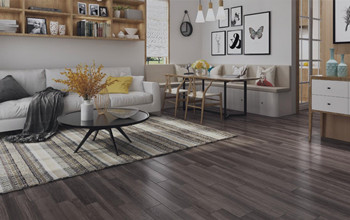
1.1.5 Limestone Tiles
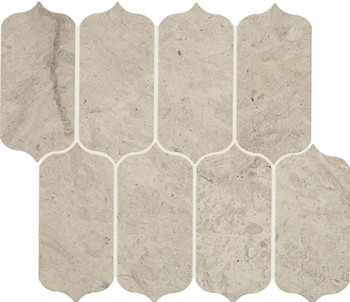
Limestone tiles are ideal for kitchen and bathroom backsplashes. They are not ideal for high-traffic areas because they are prone to scratching and staining unless they are sealed. Limestone tiles are also difficult to clean.
1.1.6 Slate Tiles
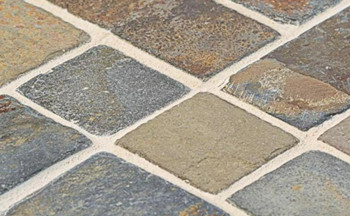
Slate tiles are ideal for kitchen backsplash, flooring, (mudrooms, hallway, foyer, and patio), and roofing. They are resistant to breaks and scratches.
1.1.7 Granite Tiles
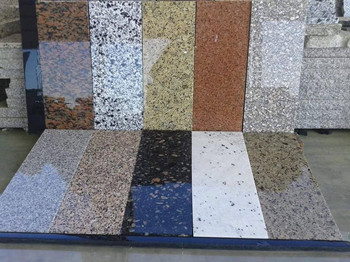
Granite tiles are ideal for laundry rooms and spaces where performance is a top priority yet with a lower cost.
The only disadvantage is,granite tiles are not so nice as other kinds of tiles.
1.1.8 Terrazzo Tiles
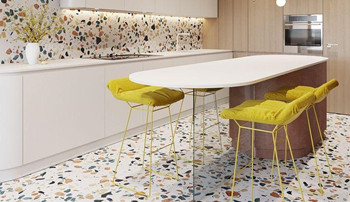
Terrazzo tiles are sturdy, thus it is commonly used in public buildings. They require frequent refinishing to make them look always shiny and smooth.
1.1.9 Mosaic Tiles
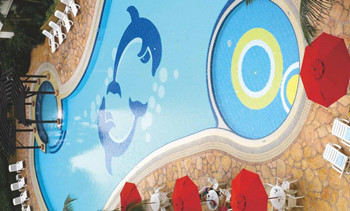
1.1.10 Sintered Tile
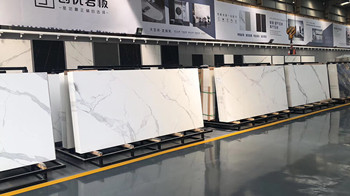
Now sintered tile is very popular in China.Not only we can use as floor and wall tiles,but can use in furniture and home decor like dining table top,kitchen cabinet table.
1.1.11 Handmade Tile
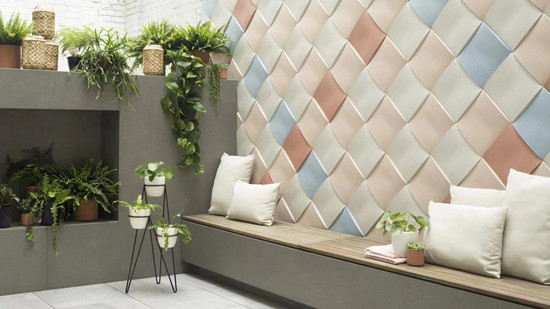
Handmade tiles are more and more popular since 2022.They have a wide range of colors,patterns,and are versatile to use for different types of design schemes like bar,hotel,villa,school,etc.Handmade tiles are suitable for both floor and wall with very nice popular patterns for your choices.
1.2 Types of Tiles Based on Application
Tiles are categorized based on their applications allowing consumers to understand what type of tile is best for their needs. Tiles are classified based on their types, durability, color, and design.
There is a specific type of tile depending on the surface it is going to be applied to.
1.2.1 Floor Tiles
Choosing the right floor tiles is dependent on which part of the house they will be used. Flooring tiles can either be glazed or unglazed.
There is a lot of foot traffic in outdoor spaces, thus flooring tiles such as outdoor ceramic tiles need to be tolerable, durable, and sturdy. They also need to be easy to clean.
Ceramic tiles contain a coefficient of friction (COF) rating of at least 0.50 and a minimum level of resistance making them ideal for outdoor surfaces.
1.2.2 Wall Tiles
Wall tiles are typically used for interior and exterior walls. They are made of ceramic and are often available in off-white and while colors. They can be glazed or unglazed.
Wall tiles are produced softer, slicker, and less durable than floor tiles. They should, however, still have a 10% absorption level.
1.2.3 Roofing Tiles
Roofing tiles from China are available in:
- Ceramic Roof Tiles
- Stone Roof Tiles
- Metal Roof tiles
- Cooper Roof Tiles
- Bituminous Roof Tiles
- Concrete Roof Tiles
- Composite Roof Tiles
1.2.4 Partition Tiles
Partition tiles are used as building partitions to divide 2 spaces or rooms. These tiles are small in size and almost lightweight. They are available in porcelain, ceramic, and glass tiles.
1.2.5 Bathroom Tiles
Bathroom tiles are small in size compared to tiles for other rooms in the house. Small mosaic tiles are the most ideal bathroom floor tiles because they have more resistance. Porcelain tiles, on the other hand, are the best option for bathroom walls.
Larger textured terrazzo and slate tiles are also ideal because they have anti-slip properties.
1.2.6 Stair Tiles
Indoor and outdoor stairs should be covered with durable materials that match the aesthetics of the décor surrounding the space. Porcelain tiles are popular for indoor and outdoor steps because they are durable, easy to clean, and easy to install. They are also available in a variety of designs.
1.2.7 Outdoor Tiles
Outdoor tiles need to be durable, strong, and ready to face any weather condition. They should also be able to withstand high traffic. They should not crack when exposed to intense heat and should not be slippery when wet.
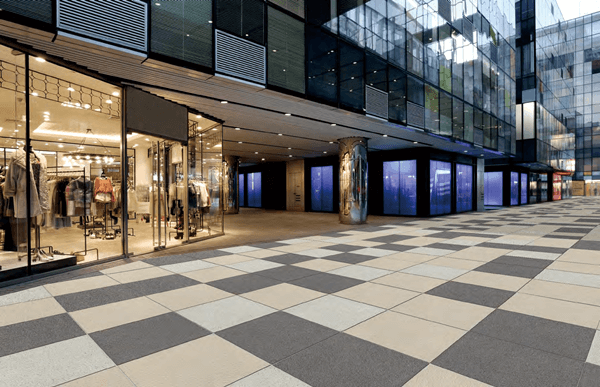
Porcelain tiles are fired at high temperatures and will not crack under intense heat and in cold. They are also resistant to staining and mildew. Their shiny look will not fade over time. They come with anti-slip properties, too.
Porcelain tiles are stylish. They come in a wide range of sizes, colors, and textures. They can also resemble the texture of real stone.
1.2.8 Pool Tiles
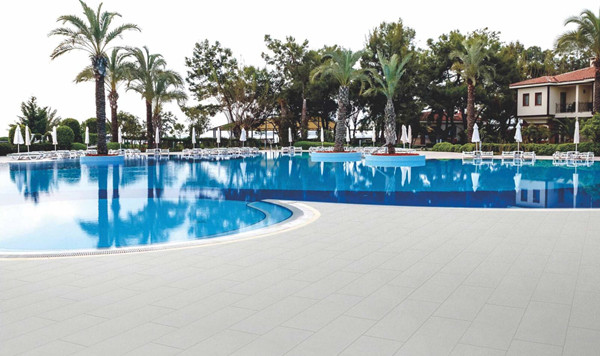
It is extremely important to choose the right tiles for the swimming pool area. Pool tiles are specially glazed to make them corrosion-resistant. Pool tiles allow you to walk at the edge of the pool on a safe and warm surface.
1.2.9 Kitchen Tiles
Kitchen floors are one of the hardest areas in the house. The kitchen gets a lot of torture every day making it always dirty, oily, grimy, and greasy.
Glazed ceramic tiles are ideal choice for kitchen floors. The transparent layer of ceramic tiles makes them durable and easy to clean. Porcelain tiles are more water-resistant than ceramic tiles. Ceramic tiles are also more resistant to high-foot traffic, thus they are more suitable for commercial kitchens.
2、Choosing the Right China Tiles
2.1 Tile Sizes
Tile sizes are from 2 inches to 18 inches. Floor titles are classified as:
- Small
These are the most demandable by importers. They are available in 2 inches, 4 inches, and 6 inches. 2-inch and 4-inch tiles are used in shower and bathroom tiles.
- Medium
Medium-sized tiles are 12 inches. They are also in demand by importers.
- Large
Large tikes are 18 inches and used to create more illusion. They have fewer grout lines making them look tidy and neat.
Some tiles are also available in 24 inches. These tiles are used in larger spaces and need specialized tools to install.
2.2 Shapes
Square and rectangle are the most common shapes of tiles. Some tiles are available in octagon, hexagon, and pentagon shapes.
2.3 Shades
Shades refer to the color tone of the tiles. Different batches usually come in different tones of the same shade. It is important to choose the same colored tone.
2.4 Patterns
Tiles differ in patterns that refer to their natural looks speck pattern on granite and natural stones. The patterns of porcelain and ceramic tiles depend on the manufacturer. Since manufacturers produce tiles based on the demand of customers, raw materials available sometimes contribute to the type of pattern.
Chinese manufacturers use digital ink injection to make Chinese tile designs unique. This new technology allows manufacturers to create various patterns on glazed ceramic wall tiles and floor tiles including marble, rustic, wood, and other effects.
2.5 Textures
Tile textures could be in semi-polished, matte, textured, or bush-hammered. Semi-polished and matt finishes are achieved by adding a glaze finish on the tiles.
Textured tile is ideal for moist and wet floors. Textured and bush-hammered tiles are ideal for terrazzo, slate, and granite tiles.
2.6 Coating
Tiles can either be glazed or unglazed.
A:Glazed Tiles
Glaze tiles come with enamel and liquid coatings and are applied to ceramic and porcelain tiles. Glaze coatings can be applied to glossy or dull tiles notwithstanding color finish.
B:Unglazed Tiles
Unglazed tiles come in the natural appearance and color of the mineral deposit remaining in the clay from where the tiles were prepared from. Unglazed tiles come with a plain and natural appearance.
Unglazed tiles are more absorbent than glazed tiles because they are not coating with any liquid glass protection. They, however, have prone to staining unless they are applied with a sealant.
2.7 Ratings
A:Tile Ratings for Ceramic Floor Tiles from China and Ceramic Wall Tiles China
Ceramic floor and wall tiles come in five grades depending on their toughness and durability.
- Grade 1. These are the least durable and tough of tiles. They are not suited for high-traffic areas. They are prone to breaking and are, therefore, only applicable for wall application.
- Grade 2. They are suitable for low-traffic areas and soft usages such as in walls and bathroom floors.
- Grade 3. Suitable for light-traffic areas in residential and commercial buildings especially in kitchens, and floors that have low traffic. They are also suitable for countertops.
- Grade 4. These tiles are suitable for high-traffic areas. They are also good for countertops.
- Grade 5. These tiles are durable and robust. They can tolerate the pressure in high-traffic areas. They are ideal for hospitals, shopping malls, hotel lobbies, airports, and all busy zones.
B:Porcelain Tile Ratings
Chinese porcelain tile ratings use the PEI rating system which has the same concepts as ceramic tile ratings. PEI ratings are based on the stiffness of the tiles.
- Group 0 or PEI 0
Tiles with this rating is recommended only for walls. They have low hardiness and cannot tolerate even the lowest foot traffic.
- Group 1 or PEI 1
These tiles are ideal for light-traffic areas such as bathrooms. They are also suitable for residential and commercial walls.
- Group 2 or PEI 2
These tiles can tolerate slight traffic areas where slippers and soft-soled shoes are used. They are not suitable for kitchens, stairs, and entrance hall floors.
- Group 3 or PEI 3
These tiles are ideal for residential and light commercial spaces including interior walls. Residential bathroom floors, offices, and countertops. They should never be used at industrial entryways because they cannot tolerate heavy foot weight.
- Group 4 or PEI 4
Ideal for moderate traffic areas such as kitchens, hotels, restaurants, hospital corridors and lobbies. They can also be used in small, and large buildings.
- Group 5 or PEI 5
They are ideal for areas with high foot traffic and areas prone to wetness and scratches such as malls. Public buildings, building entryways. This type of tiles is also used in pool sides. These are strong tiles.
3、China Tiles Design & Specifications Guide
China tiles vary in design and specifications.
3.1 Differences between Tiles
It can be confusing to choose the best tiles as there are many of them and they almost all look the same. Each type of tile, however, has its features and strengths.
3.1.1 Ceramic Vs Porcelain Tiles
Porcelain tiles are more superior to ceramic tiles. The temperatures they are baked in give differentiate the toughness of ceramic and porcelain. Porcelain tiles are baked in higher heat. Ceramic tiles are produced at low temperatures.
| Ceramic Tiles | Porcelain Tiles | |
|---|---|---|
|
Porosity |
More porous | Less porous |
|
Water Resistance |
High rate of absorption | Low rate of absorption |
|
Heat Resistance |
Resistant to extreme heat | Not resistant to extreme heat |
|
Stain Resistance |
Less resistant |
More resistant |
| Thickness | Less thick |
Thicker |
| Maintenance | Easy and affordable |
Easy yet expensive |
| Resale Value | Smaller ROI |
Higher ROI |
| Price | Cheaper |
More expensive |
Ceramic and porcelain tiles, though, are suitable for high-traffic areas because of their durability. They also both are available in various designs, sizes, shapes, patterns, and textures.According to our past 12 years exporting tiles experiences,ceramic tiles are more suitable for bathroom and kitchen room.Porcelain tiles are good choices for interior spaces like dining room,bedroom,living room,ect.
3.1.2 Marble Vs Limestone Vs Granite Tiles
Marble, limestone, and granite tiles are suitable for homes, as well as small and large buildings. Although they are all tough and durable, they have some differences.
| Marble | Limestone | Granite | |
|---|---|---|---|
|
Patterns |
Veiny / speckled | Speckled | Freckled / dappled |
|
Colors |
Green, black, white | Subtle shades from beige to brown | White, black, blue, yellow, red |
|
Resistance to Heat |
Yes | Yes | Yes |
|
Water Resistance |
Should be sealed | Should be sealed |
Sealing advised |
| Scratch Resistance | Yes | Yes |
Yes |
| Stain Resistance | Should be sealed | Should be sealed |
Sealing advised |
| Price | Expensive | Very low price |
Med-priced |
While granite tiles are resistant to stains and scratches, they are not resistant to cracks. Marble may be more porous than granite but it can be stained by acid liquids such as juices and red wines.
3.2 Choosing the Best Tiles
There are different factors to consider when choosing the best tiles for different areas.
3.2.1 Best Tiles for Bathroom
Small tiles are for small rooms such as bathrooms. Small mosaic tiles are especially suited for bathroom floors because they have more friction. Mosaic tiles have very nice designs and colors for you to choose.
Larger tiles are suitable for bathroom floors as long as they are textured or hammered to prevent slipping such as slate and terrazzo tiles. This depends on what size your bathroom is.Larger tiles can help make your bathroom look spacious. Ceramic tiles are great for bathroom walls if considering firmness.Of course,now many young people prefer using porcelain tiles for bathroom wall just for good looking.
3.2.2 Best Tiles for Kitchen
Porcelain and ceramic tiles are more popularly used for kitchen floors than natural stone because they are resistant to spills. Limestone tiles are also great for kitchen floors because they are durable and attractive. Limestone and mosaic tiles are porous. Limestone tiles are also harder and do not easily scratch as compared to granite and marble.
Ceramic tiles are ideal for backsplashes because they can withstand moisture and heat. Sealed ceramic tiles are suitable for sinks and countertops.
3.2.3 Best Tiles for Shower
Textured and bush-hammered tiles are great for shower rooms. They have a rough texture to prevent slipping. Marble, porcelain, and glass tiles are most suitable for shower room floors. Porcelain tiles are perfect for shower room walls, too.
3.2.4 Best Tiles for Bedroom
Natural stone tiles are the most ideal for ground-floor bedrooms because of their sturdiness. They are suitable for upper-floor bedrooms, too because they are heavy and can carry a lot of loads and an unstable subfloor.
Natural stone tiles are also ideal for chilly climates because they are better at distributing radiant heat than wood.
If you condier more about tile cost,porcelain tiles are much more cheaper than natural stones.
3.2.5 Best Tiles for Laundry Room
Porcelain tiles are resistant to moisture and are durable making them ideal for mudrooms and laundry rooms.
3.2.6 Best Tiles for Walkways
Marble, granite, and limestone are suitable for walkways, around the pool, and outdoor kitchens. They can withstand extreme changes in temperature. Slate is a good alternative for more textured surfaces to prevent slipping.
3.2.7 Best Tiles for Entryways
Entryways, compared to any rooms, are more prone to extreme temperature changes, thus durable floor tiles such as natural stones and slate are more suitable than vinyl and wood. Stone and slate tiles have more texture, too.
4、Where to Find Tile Manufacturers and Suppliers in China?
When you decide to import tile from China. You may come across a question: where to find the tile manufacturers or suppliers in China.
Most cities and provinces in China specialize in the manufacture of specific products. Most suppliers of a certain product are grouped together in one area. This concept makes it easy for importers to source products from China. If you are sourcing tile from China, here are the places you need to look into:
4.1 Where are the Tile Cluster Manufacturing Cities in China?
4.1.1.Foshan, Guangdong Province, World’s Capital of Tiles
Foshan is a hub for ceramic tiles. About 350 ceramic tile producers with an annual production of about 1.2 billion square meters of ceramic tiles are based in Foshan, Guangdong Province. In the past 10 years Foshan has produced 54% of China’s total ceramic tile output and 25% of the world’s total production of ceramic tiles.
5,000 years of production experience makes Foshan the leading ceramic tile producer in China. Foshan ceramic tile suppliers continuously work on improving the designs of their ceramic tiles. They thrive to match the quality of ceramic tiles produced in Spain and Italy making their exports to major Western markets grow.
8 out of the 10 “China Famous Brands” named by the government are based in Foshan, Guangdong Province.
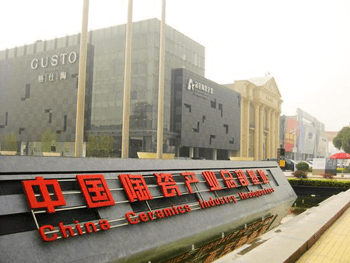
Related article:Top Five Furniture Markets in China, Foshan
Related article:Top 5 Home Decoration and Building Material Markets in Foshan, China
4.1.2.Zibo, Shandong Province, Where Low-Value and Glazed Polished Tile Are Mainly Produced
Since 2012 the quality of tiles produced in Shandong have improved tremendously. The cost advantage of the province has been attracting foreign buyers. Shandong tile exports have reached record highs making it rank as the third province in China in terms of tile exports.
Comparing with Foshan tile,Shandong tile is not so high quality but with lower price.Why?Raw material is the most imporant point.Geography determines the soil in Shandong is worse than Foshan’s.Moreover,most Foshan factories use ink imported from Spain or Italy.Shandong factories use local ink in order to save more cost.There are more production technologies decide the Foshan tile quality is better.I will write other detailed article on how to distinguish good and bad tiles in near future.
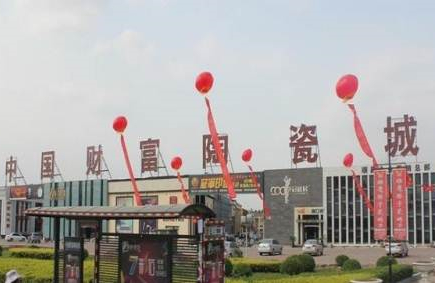
4.1.3.Fujian Province, Where Low-Value and Wall Tile Are Mainly Produced
Most of the exterior tiles exported by China are produced by small family owned workshops in this province. Each workshop would only have about 5 to 10 workers work on a project at a time. Having small workshops, they can offer lower prices.
If you are not too meticulous about quality issues, the tiles produced in this region are an ideal choice.
4.1.4.Jiangxi Province, Where Middle Or Low Quality Tiles Are Produced
Similar to Fujian tiles,most the of the tile manufacturers in Jiangxi produce middle or low quality tiles.Their prices are lower if comparing with Foshan tiles.If your budget is not enough and not concern too much about quality.Jiangxi tiles may be a good choice.
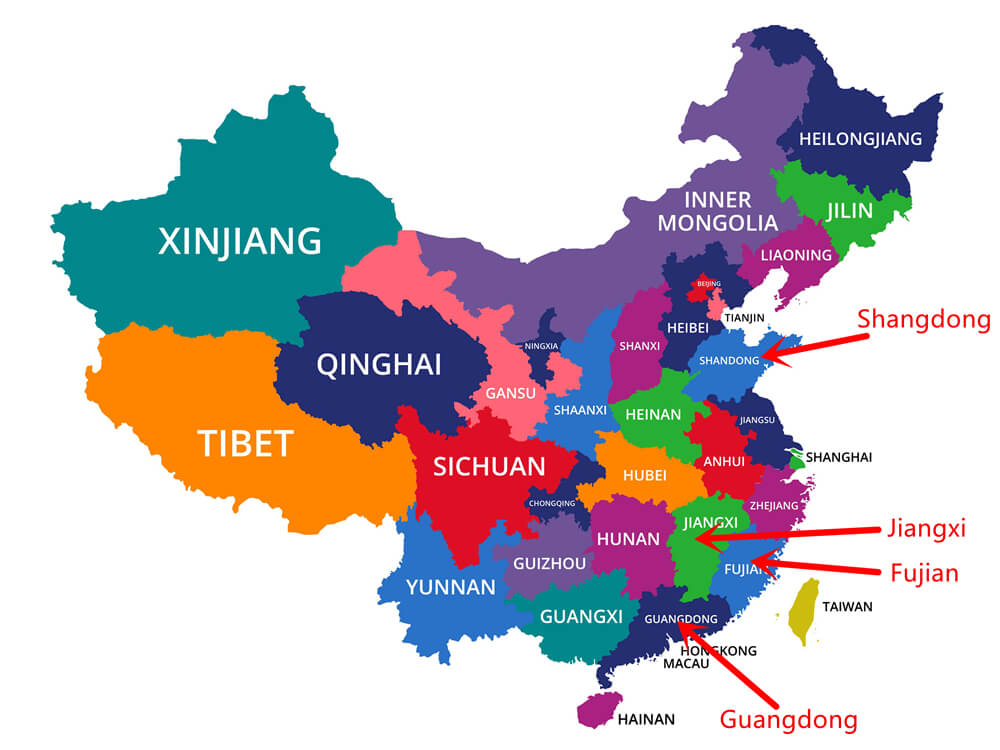
4.2 Tried and Tested Methods to Find Tile Manufacturers and Suppliers in China
4.2.1 Alibaba
Alibaba.com is a business-to-business (B2B) platform on the internet where you can find thousands of China tile manufacturers and suppliers. Tile suppliers listed in alibaba.com can either be factories or traders.
It can be difficult to distinguish a factory from a trader in alibaba.com but it is always best to deal with manufacturers instead of suppliers. Some manufacturers, though are listed in alibaba.com using their trading companies.
4.2.2 Trade Shows
Attending trade shows is the best way to personally meet (face-to-face) China tile manufacturers and suppliers.
Here are some of the trade fairs where you can find China kitchen tiles, floor tiles, porcelain tiles, ceramic tiles, marble tiles, mosaic tiles, stone-coated roofing tiles, ceramic wall tiles, bathroom tiles, and more in China.
|
Trade Fair |
Location | Date |
|---|---|---|
|
China International Ceramic and Bathroom Fair |
Foshan International Conference & Exhibition Center | April 18 – 21, 2021 |
|
Ceramics China Fair |
China Import and Export Fair Pazhou Complex | June 22 – 25, 2021 |
|
Rooftile China |
China Import and Export Complex – Canton Fair Complex | May 10 – 12, 2021 |
|
Ceramics, Tile & Sanitary Ware Expo |
Shanghai New International Expo Centre | March 29 – April 1, 2021 |
| Shanghai International | Shanghai World Expo |
May 23 – 25, 2021 |
| Advanced Ceramics Exhibition & Conference | Exhibition and Convention Center | |
| DOMOTEX Asia/ China Floor | National Exhibition and Convention Center ,Shanghai |
May 25 – 27, 2022 |
| China Xiamen International Stone Fair | Xiamen International Conference & Exhibition Center, Xiamen, China |
May 18 – 21, 2021 |
4.3 China Tile Sourcing Agent
If you cannot personally source and go through the entire importation process for tile manufacturers and suppliers in China, you can work with a sourcing agent. A sourcing agent is a professional individual or company based in China who can do all the legwork for you.
Sourcing agents can source tile manufacturers and suppliers, do factory inspections, negotiate prices, and the long and tedious import process. If you decide to hire a sourcing company as your partner to source for you, please remember that your agent should be very professional in the products you need to import. For more details please click here.
5、What Kind of Tile Will Bring You Business?
We exported tiles from China to other countries since 2007. In the past 14 years, we always had the soonest sense of what kind of tiles would bring business to our clients. Here I list 5 kinds of tiles that had a large exportation volume in 2021.
5.1 Glazed Polished Marble Look Tiles
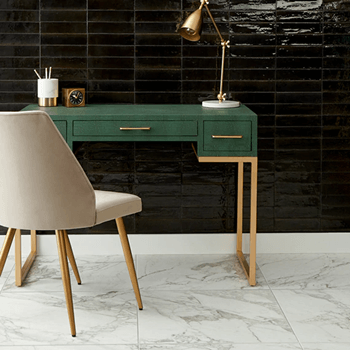
Glazed polished marble tiles are tiles which copy from natural marble designs.You can find this kind of tile is quite colorful.Most of them are 3D inkjet.You can custom your ideal designs easily.Comparing with natural marbles,glazed marble look tiles are more affordable and have a wide range of colors and patterns to choose from.
5.2 Rustic Tiles
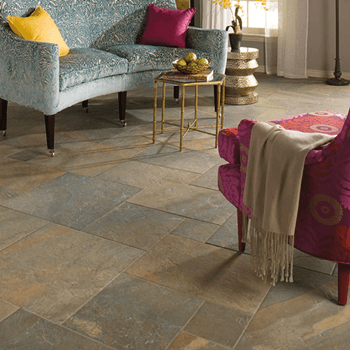
Many people like to use these rustic tiles because of their classic designs and seldom outdated. According to the statistics, rustic tiles amount to 10% of all the ceramic tiles in China. Currently, nearly 80% of the lines of rustic tiles are distributed in Guangdong, Fujian, Jiangxi, Shandong, Hunan, and Hubei provinces. In the first half of this year, 50 new lines for rustic tiles were presented in Guangdong and Fujian and Gaoan, and Linyi. All these production areas have more than 10 new lines for rustic tiles. We can judge that the markets have a big demand for rustic tiles.
5.3 Wood Look Tiles
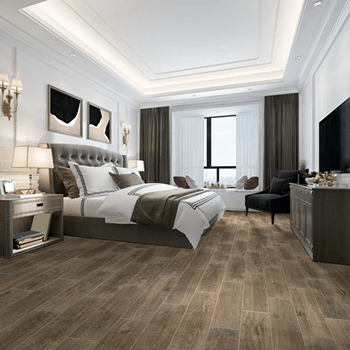
Wood-look tile, one kind of ceramic tile but has wooden look. Comparing with real wood floor tiles, ceramic wood tiles have many advantages:
- lower prices
- waterproof
- stainroof
- scratch resistant
- UV resistant
- fire resistant
Unlike real wood, wood-look tile will not warp or splinter and will never need to be stripped, sanded, re-stained, and re-sealed.
Though wood-look tiles are popular for many years in China. It is not widely used in other countries. This could be a good business if there are not too many competitors in your markets.
5.4 Large-format Ceramic Tiles
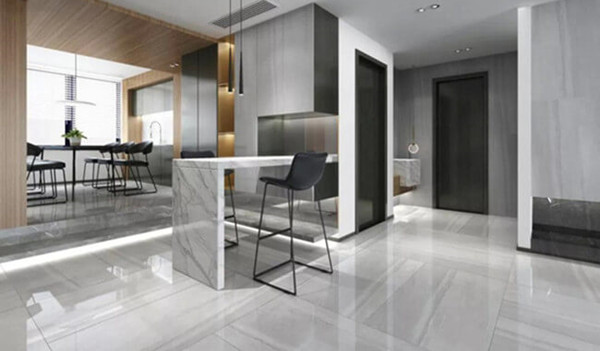
It is hard to define what large-format tile is because every country has its definition for tile sizes. For example, In America, those tiles which exceed 450x450mm are large-format tiles. While in Italy,large-format tiles mean those tiles which are 1200x1200mm or bigger sizes. However, in China,large-format tiles are wall or floor tiles that exceed the average 800x800mm. Large-format tiles are very popular in China in recent years. This can be attributed to the many advantages of using large format tiles rather than a more common-sized tile. We often can see large-format tiles in high-grade Star class hotels, high-grade business spaces, or other formal occasions. On the one hand, the large-sized ceramic tile can extend the spacing effect, make the space visually open, break through the aesthetic fatigue brought by traditional ceramic tile. On the other hand, a large-scale pasting up the effect will be more complete style, can highlight the atmosphere of high-end visual effects and temperament.
5.5 Sintered Tiles
We have a brief introduction about what sintered tile is on 1.1.10. This kind of tile is very popular in China now (2021) cause it has many advantages:
- Safety and Health
- Weatherproof
- Unaffected by heat or cold
- Waterproof
- Stainproof
- Easy to clean
- Very hard to chip, scratch or damage
- Food safe and hygienic
- Non-porous – doesn’t need sealing
- Multi-scene application
- Flexible customization
We strongly believe that sintered tiles will be popular in other countries sooner or later. It is quite a good tile business if you get a head start in this field.
What is Sintered Stone Tile Slab?
| Sintered Tile Regular Sizes | 1800×900mm、2400×1200mm、2600×800mm、2600×1200mm、760×2550mm、2700×1600mm、3200×1600mm、3600×1600mm,etc |
|---|---|
| Sintered Tile Regular Thickness | 6mm、9mm、11mm、12mm、15mm、20mm,etc |
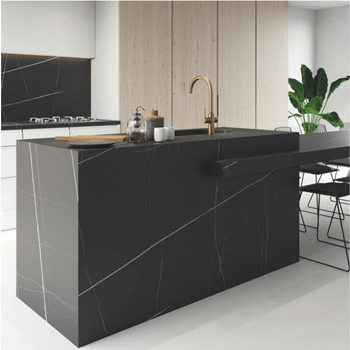
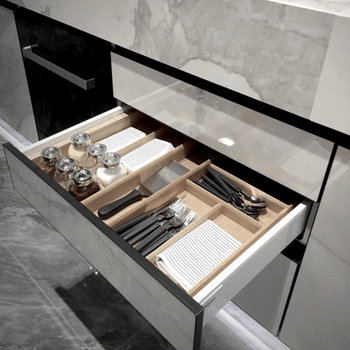
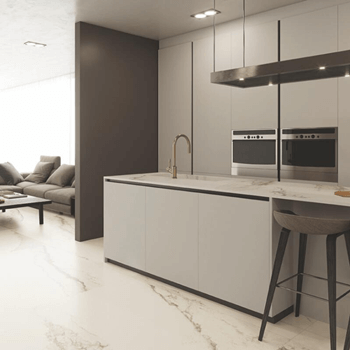
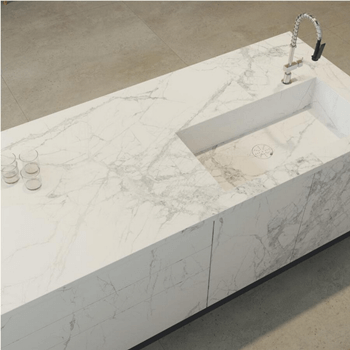
6、Importing Ceramics Tiles for Your Projects – 6 Things You Need to Know
Here are six important things you need to know to successfully import tiles from China.
- Get samples from showroom
Before making the final order for tiles from China, make sure to get a sample for a thorough inspection. Most tile manufacturers and suppliers in China have showrooms where they exhibit all the tiles they manufacture.
Most tile samples are less than two square feet. This is a pretty good size to scrutinize the quality and durability of the tiles.
- Maintenance and warranties
The tile manufacturer can produce the best tiles. The contractor can accurately install the tiles. The cleaning and maintenance of the tiles, though fall upon you. Taking proper care of the tiles will make them more durable and last longer.
Use only cleaning materials recommended by the manufacturer. Make sure to also follow the care recommendations of the manufacturer. Follow all the recommendations of the manufacturer to keep the warranty intact. Breakage is, however, not covered by the warranty.
- Anti-Slip
Textured tiles have anti-slip properties making them safe especially in the kitchen, stairs, bathrooms, and pool areas.
- Breakage
It is common for tiles to crack or break while in transit from China. This often happens when the material used is of lower quality. It is, therefore, important to choose tiles with enough strength.
Manufacturers and suppliers often have warranties against breakage. They have a minimum quantity for them to replace broken tiles.
- Overage
When ordering tiles for a project, there should be an overage of 5% to 12% (industry recommended standard). This overage will cover breakage and installation errors to ensure that you still have the right number of tiles to complete the project.
- Weight
The structure where the tiles are going to be installed has a bearing on the weight of the tiles. If you are installing tiles on a vertical structure, such as a wall, heavy tiles do not have the strength to be steady. If tiles are going to be installed in floors or horizontal structures, the weight of the tiles does not matter.
7、Frequently Asked Questions about China Tiles
Yes, porcelain tiles from China are safe because they are fireproof. In case of fire, the tiles will not produce smoke or any toxic fumes.
Yes, ceramic wall and floor tiles from China are safe because they do not contain any toxic substances.
Ceramic floor tiles from China can last for decades provided they are properly cleaned and maintained. The right tiles for a specific application will also ensure ceramic tiles will last long. Glazed ceramic floor tiles can last for over 50 years.
No, not all tiles can handle heavy foot traffic. Tiles are classified according to grades that determine their strength. Grade 1 tiles, for example, are suitable for floors while Grade 2 tiles should not be used on floors.
Most porcelain tiles from China are resistant to abrasions or scratches. It is, however, important to know the Porcelain Enamel Institute (PEI) rating of the tile you are buying.
China porcelain tiles with a PEI 3 are good enough for residential flooring while PEI 4 or PEI 5 is suitable for commercial flooring.
Some tiles need to be sealed while others do not. Sealed or glazed tiles will absorb liquid such as water, juice, wine, and coffee. Some tiles are by nature porous and they stain easily when not glazed.
China porcelain tiles as well as ceramic tiles, marble tiles, terracotta tiles, granite tiles, marble tiles, and limestone tiles from China need to be sealed.
It is best to stock at least 10% more tiles than you need to complete a project. Stocking up replacement tiles will ensure a uniform surface in case you need to replace a tile. It can be difficult to find the same color or design of tiles if you need to make a replacement and you do not have extra stocks.
For underfloor heating, you will need textured tiles for more friction on wet floors.
Tiles and underfloor heating make a good pair. Tiles are good conductors of heat so heat is easily transferred to the tiles and warming the room.
The best tiles to use with underfloor heating are ceramic tiles, porcelain tiles, and stone tiles. These tiles effect9ively transfer heat.
8、How to Import Tiles from China?
There are many things you need to know if you intend to import tiles from China.
8.1 How to Find Tariff on Tiles from China
To find the tariff on a particular tile from China search for the 6-digit HS code of the particular tile. Across the HS code, you will find the corresponding tariff (%).HS code for tiles are catagoried by water absorption rate since 1st Jan,2017.HS code 6908 was cancelled and would not be used from then.
| Products |
Tile HS Code |
|---|---|
| Tile Water Absorption below 0.5% | 690721 |
| Tile Water Absorption 0.5%-10% | 690722 |
| Tile Water Absorption above 10% | 690723 |
| Mosaic | 690730 |
| Finishing ceramics | 690740 |
8.2 Import Duty on Tiles from China
The import duty on tiles from China to the US, for example, is calculated based on the HS code of the tiles and the customs value as reflected on the commercial invoice.
Formula: Customs Value x Duty Rate = Import Duty
If you are, for example, shipping 10,000 pieces of glazed ceramic tiles with a value of $30,000, the import duty is $300. This is just a rough estimate of the import duty as there are other customs fees that will affect the total amount payable.
It is extremely important to know the right HS code of the specific tile to avoid any trouble with customs.
8.3 Anti-Dumping Duty on Tiles from China
The anti-dumping duty is a tariff on selected imports that are sold at a lower price than the amount the goods are sold in the exporter’s country.
Similar to other countries, the US does not have an anti-dumping duty on tiles from China. The government of China, through the anti-dumping duty, decreases by 9% the tax deduction from China tile manufacturers and exporters. This makes tiles from China up to 50% lower than tiles sold by manufacturers and suppliers in other countries.
Despite the current trade war between China and the US, there are still no anti-dumping duties on tiles from China.
9、Problems You May Have When Import Tile from China
When you decide to import tiles from China, you should remember that there are certain risks involved. A product such as tiles are delicate in nature.
9.1 Quality Problems
The quality of the product is always a rising issue when importing from China. After finding a tile supplier you wish to work with from China, the next step is to request for a sample. Suppliers would often send you a sample based on your specifications with the best possible quality. Satisfied with the quality, you would place an order, make the payment and await arrival of the shipment.
The tiles you should receive should be of the best quality based on your specifications that has been agreed upon with the supplier. Tiles should have no corners and edges. There should also be no breakage when received.
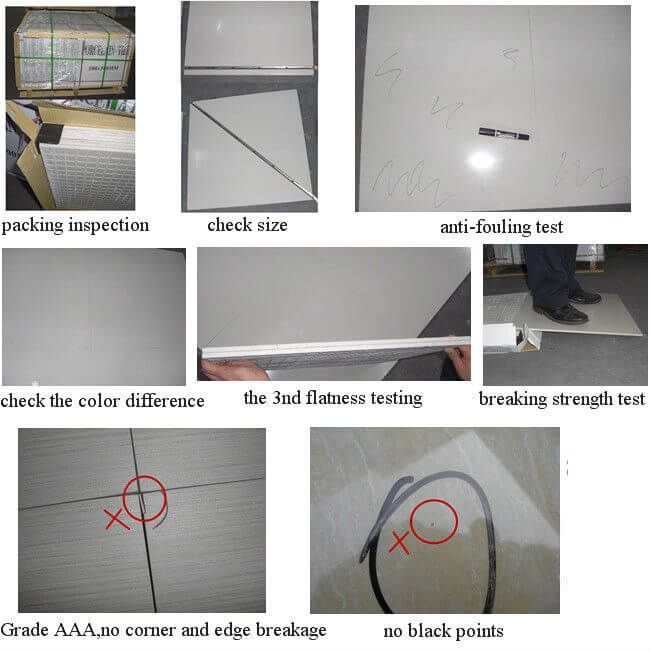
China products are known for their low cost and unfortunately also for different quality levels. Therefore,finding a reliable tile supplier is the most important part,but how?
Issues often arise when you discover inconsistencies in your shipment when full payment has already been made.You are left with only a few options. Although you can litigate in China to solve this issue, Chinese suppliers are aware that the cost of litigation is often not worth the cost of their shipment so they simply just shrug this off.
The problem of quality could be avoided or kept to a minimum if you are working with a tile sourcing agent. He could offer the one-stop sourcing services such as finding the best tile supplier,checking the quality,doing the certificate,arranging loading and all exporting custom matters.Once you try the help of sourcing agent,you will know how easy it is to import from China,saving more time and energy,you can expand more business.
9.2 Payment Problems
The standard payment terms used by most China tile manufacturers and suppliers are 30% down payment before production and 70% balance upon completion of the order.
Scams are quite rampant in China, so if you are a first-time importer of China tiles, it is best to make a small order first to get to know the manufacturer or supplier you are dealing with. You can also hire a sourcing agent to avoid being scammed.
Here are some of the safe payment options you can use with your China supplier:
Telegraphic Transfer
This form of payment is accepted by all suppliers. This however does not offer full protection, Make sure though you are transferring funds to the account of the supplier with stamp and not to a personal account.
Alibaba Escrow
Alibaba Escrow can be used if sourcing from Alibaba.This option gives you protection as Alibaba withholds money to the China supplier until you receive the goods.Not all suppliers accept this mode and it is normally applicable only for small orders.
PayPal
The PayPal payment option assures the fast receipt of payment to a China supplier. It is applicable though to very small orders, most like the sample. The downside is not all China suppliers accept this payment mode. Besides, PayPal also charges high fees.
Cash on Delivery
Paying your China supplier cash when you come to China.If you are working with a sourcing agent from China.He help place orders and quality control and arrange shipment.If the agent confirms that everything is in order, then he will pay the manufacturer.
Letter of Credit
This type of payment does not require the importer to make any deposits to the supplier when orders are usually below $30,000. A good thing about L/C is it places some form of pressure for the supplier to comply with the Order Agreement.Not all China suppliers though accept L/C. Securing a Letter of Credit from a bank has high fees, too.
9.3 Shipping Problems When Import Tiles From China
Although tiles are delicate products, it is not that difficult to ship tiles out of China. The logistics and shipping are really not that complicated as is usually the case. What China importers need to deal with is the shipping cost.
If you are a first time importer of China products, here are what you need to deal with:
- Port of Loading or local Transportation
This is the transporting of the products from the manufacturer’s warehouse to the closest Port of Loading. Most ports of loading are three to four hours away from the nearest port thus most often this transportation cost is part of the FOB (Freight on Board) cost quoted by the manufacturer.
- Export Clearance
All cargo shipped out of China need to be cleared for export. These documents need to be in order with the Chinese Customs Authorities. The cost of these documentations are also often included in the FOB price. It will be more cost effective if the manufacturer handles this part.
- Freight Cost
This is the cost from the Port of Loading to the Port of Destination (country of the buyer). Costs are computed depending on the cargo: Full Container Loads (FCL) or Less than Container Load (LCL).
What most forwarders do not say though is the local charges involved which can bring the freight cost at times almost five times higher. This is a dilemma of most China importers – low freight cost but very high local charges.Therefore,before you cooperate with the shipping agent,make sure all charges are listed clearly and no invisible cost.
- Insurance
It is always important to buy insurance for your shipment.Some suppliers may provide low quality package in order to reduce cost. Some importers may miss out on asking about packaging for shipment. Therefore,insurance is very important as tiles are delicate and breakable products. Besides, without insurance, the forwarder will not give compensation should the cargo be damaged while in transit.
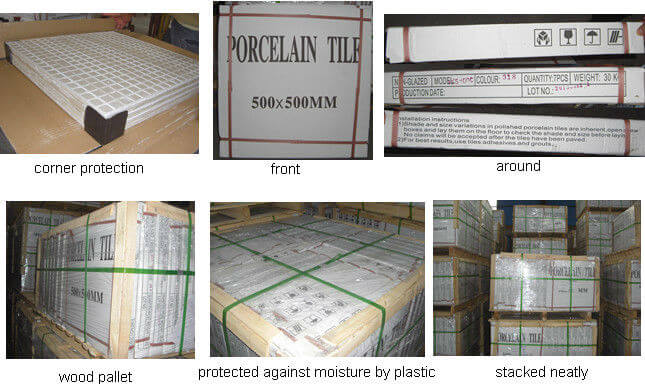
- Document Delivery
The cost of delivering the Bill of Lading, Packing List, Commercial List and other documents through either DHL or FedEx are often paid by the importer.However,some suppliers are willing to pay this charge if you cooperate many times or make a big order.
- Port of Destination Local Charges
Most first time China importers are often surprise of local charges in the Port of Destination. Make sure you know all charges clearly before shipping.
- Customs Clearance / Bond
This is applicable only to US importers from China. A Customs Bond needs to be filed before the goods leave China. This is applicable for orders over $2,500.
- Local Transportation or Port of Destination to Final Shipping Address
This is the cost from the Port of Destination to your warehouse address.
Tiles are delicate products yet shipping costs and on-time delivery are more serious concerns than logistics.
Your sourcing agent can help you manage shipping costs as they have good relationships with most shipping companies and freight forwarders in China. They can negotiate for good shipping costs and ensure your China tiles will arrive at your warehouse on time.
10、How Foshan Sourcing Help You Import Tiles from China?
- Background Check
Foshan Sourcing can help you check the legitimacy and reliability of the tile manufacturer or supplier you choose for your order. He can visit the factory and give you first-hand feedback.
- Manufacturing capabilities
Foshan Sourcing can send one of its professional agents to check on the manufacturing capability of the supplier to ensure it can fulfill your order with the right quality and deliver on time.
- Quality system auditing
Quality system auditing is one of the strengths of Foshan Sourcing. We can maintain all records of your transactions making sure all are in order.
- Best product price
Sourcing for tile manufacturers in China means you will be getting a lot of different quotes for your orders.
We can help you assess all these prices to make sure you get the best possible price possible for a minimum order quantity (MOQ), and the best possible quality.
- Negotiation & contracts
Negotiating and drawing up a contract yourself with a China tile manufacturer may be difficult if you do it on your own because of the language barrier. Foshan Sourcing can help you negotiate for the best price and terms and conditions of the contract because they both speak the same language.
- Safe payment method
We have a list of suppliers with verified and safe payment methods to make sure you do not get scammed.
- Best logistics solution
You do not need to hire logistics experts because Foshan Sourcing has a team of logistics experts who can update you with everything concerning your business.

Importing from China entails a tedious process starting off with sourcing the right tile supplier all the way to having the orders delivered to your warehouse.
Luckily, there are B2B market places that can guide you every step of the way. You need not physically go to China, unless of course you opt to do so. There, too are sourcing agents you can work with in China to make the entire import process of tiles successful.
Related article:How To Import Building Materials From China?
Related article:Top 100 Building Materials Suppliers in China
Consult Your China Tile Importing Experts
CONTACT US
Tell us Your Project Details and Get a Quick Quote Right Now , Please Feel Free to WhatsApp: +86-13790051345

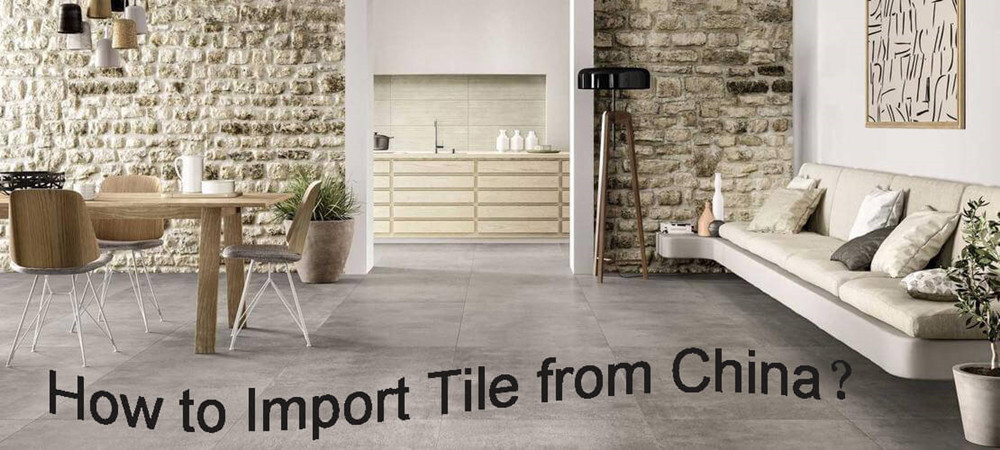
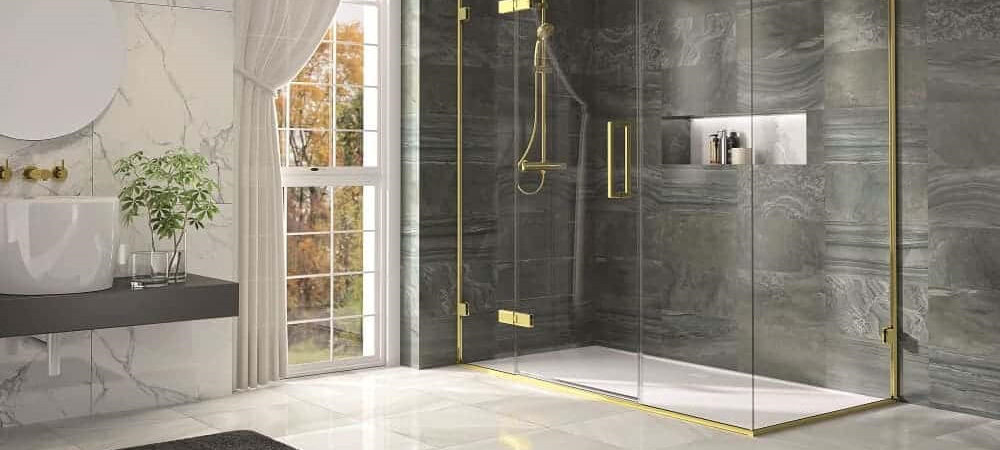
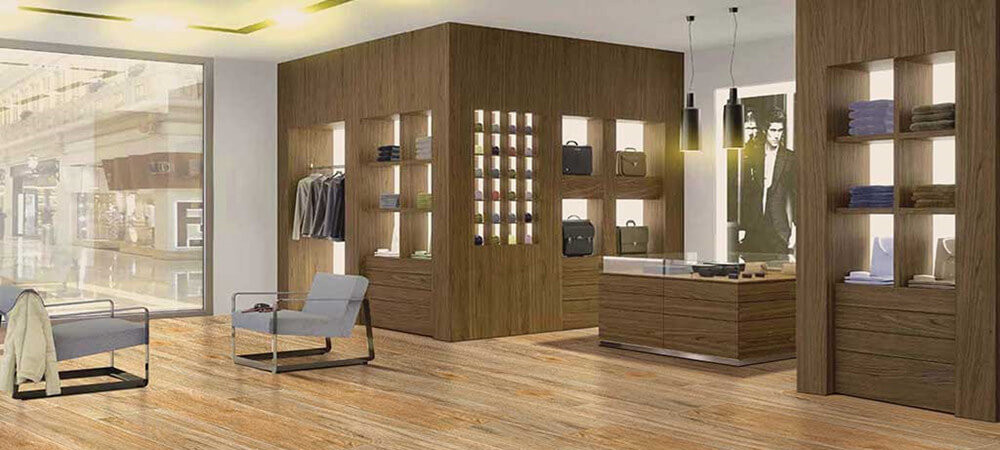
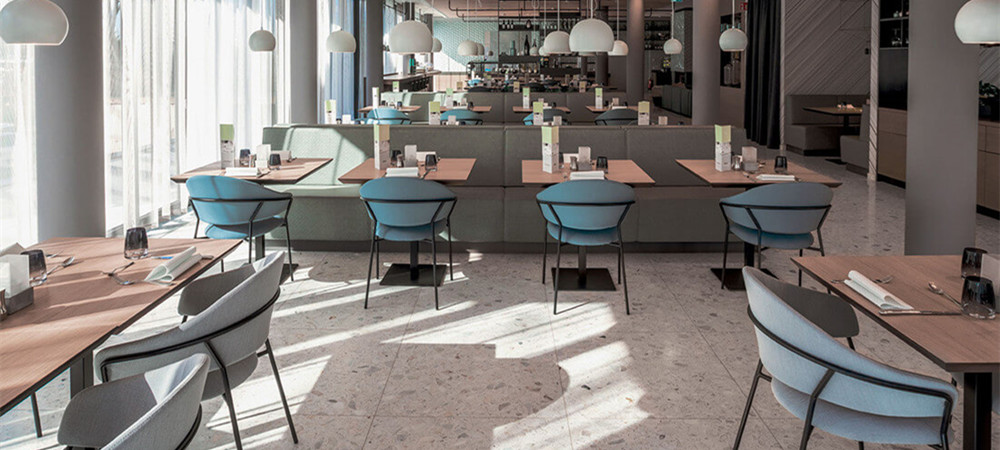
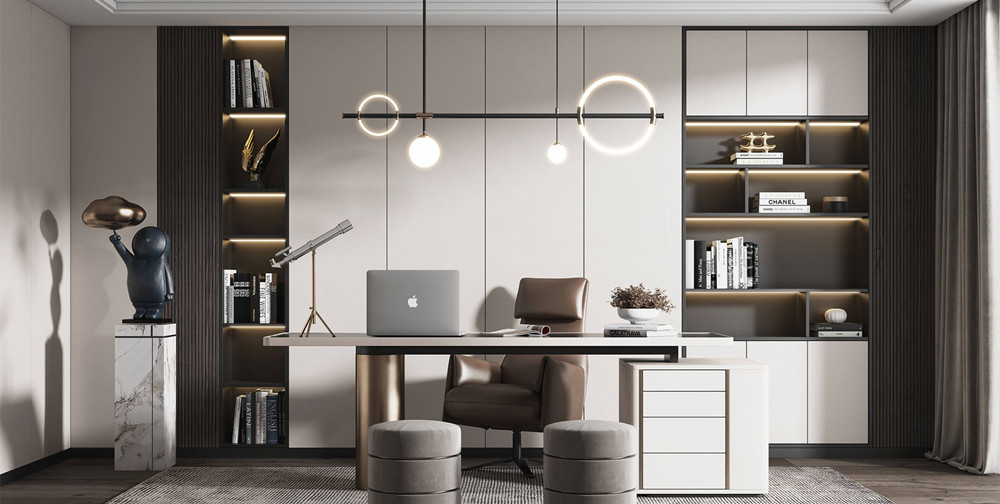


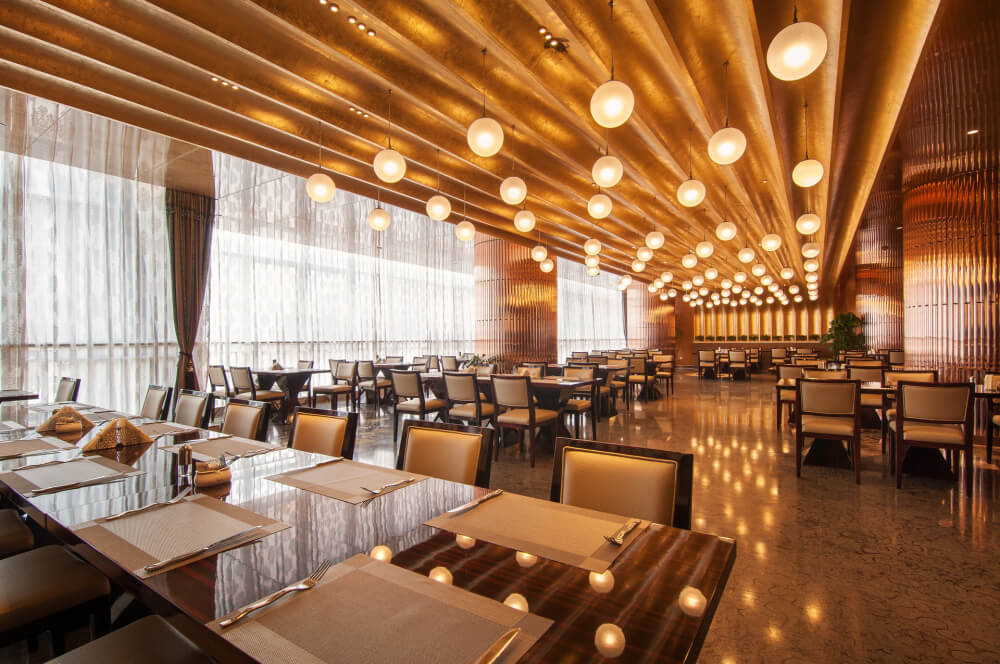
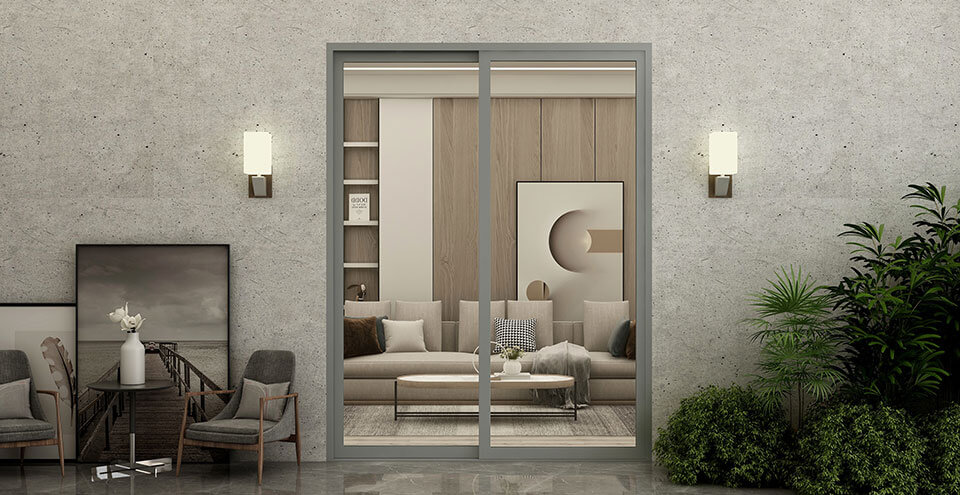
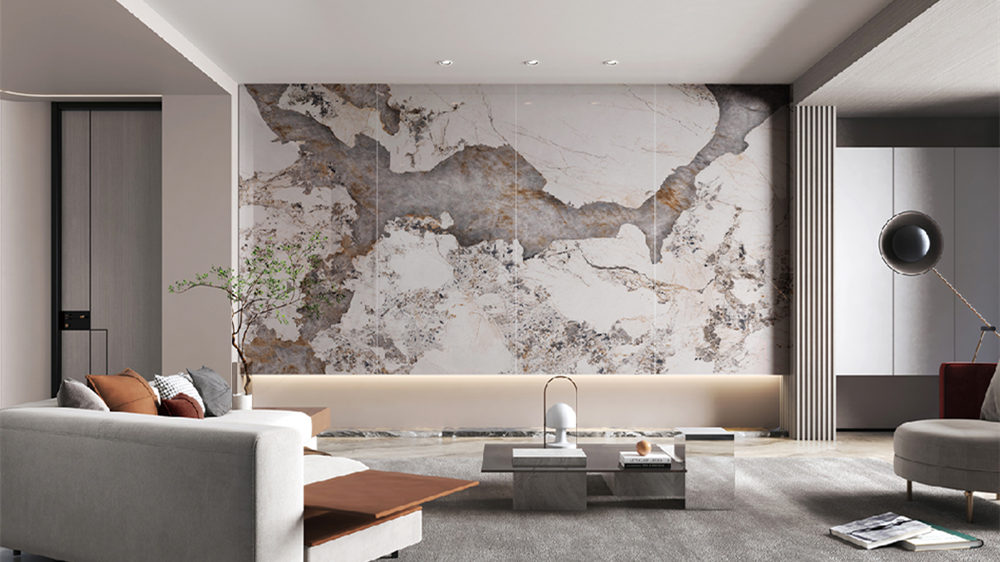
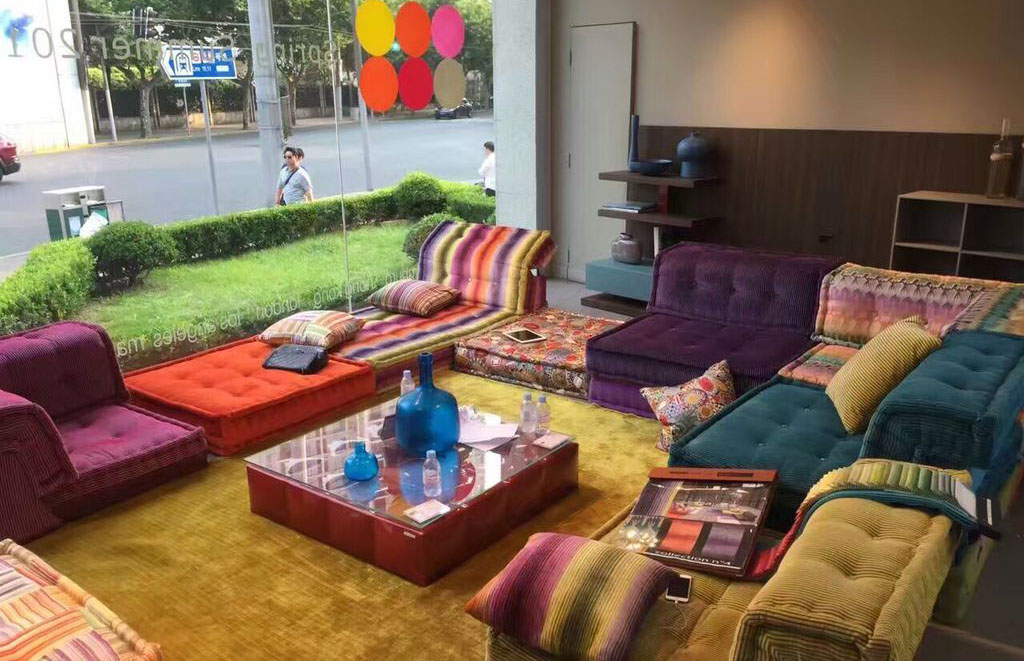

An interesting discussion is worth comment. I think that you should write more on this topic, it might not be a taboo subject but generally people are not enough to speak on such topics. To the next. Cheers
I haven’t checked in here for some time since I thought it was getting boring, but the last few posts are great quality so I guess I will add you back to my daily bloglist. You deserve it my friend 🙂
Hi! Someone in my Facebook group shared this site with us so I came to take a look.
I’m definitely enjoying the information. I’m book-marking and will
be tweeting this to my followers! Exceptional blog and amazing design and style.
Spot on with this write-up, I actually think this web site needs much more attention. I’ll
probably be back again to see more, thanks for the advice!
Wow! This blog looks just like my old one! It’s on a totally different subject but it has pretty much the same layout and design. Outstanding choice of colors!
Great post. I am facing a couple of these problems.
nice forum
Thank you for the auspicious writeup. It if truth be told was a enjoyment account it. Glance complex to more brought agreeable from you! By the way, how could we keep in touch?
I appreciate the work which you have shared here. The article you have shared is very informative. Your post is really interesting to read, I would like to thank you for sharing this with so much information. My website has the same niche. You can check the link of my website: http://www.stonedepotgh.com
What’s up mates, how is all, and what you want to say on the topic of this paragraph, in my view its in fact remarkable in favor of
me.
Thanks again for the article post.Thanks Again. Awesome.
I like this website because so much useful material on here : D.
Greate pieces. Keep posting such kind of information on your site.
Im really impressed by your blog.
Hi there, You’ve performed a great job. I’ll definitely digg it and
in my opinion recommend to my friends. I’m sure
they will be benefited from this site.
I just could not depart your web site before suggesting that I really enjoyed the standard info a person provide for your visitors? Is gonna be back often to check up on new posts
I cannot thank you enough for the blog.Thanks Again. Awesome.
thank you admin
“This website really has all of the info I wanted about this subject and didn’t know who to ask.”
“How to Import Tile from China: A Complete Guide” Thanks so much for the blog such a greate blog. Thanks Again.
You made some respectable points there. I seemed on the web for the issue and found most people will go together with along with your website.
Ahaa, its pleasant conversation about this article here at this weblog, I have read all that, so now me also commenting here.
thank you web site admin
Hello. And Bye.
I just want to mention I’m all new to blogs and certainly savored you’re web site. More than likely I’m want to bookmark your site . You surely have good writings. Appreciate it for sharing your web page.
just what I needed to read
thank you web site admin
Pretty section of content. I just stumbled upon your blog and in accession capital to assert that I acquire actually enjoyed account your blog posts. Any way I will be subscribing to your augment and even I achievement you access consistently quickly.
thank you web site admin
I really like and appreciate your post.Really thank you! Want more.
Only wanna tell that this is extremely helpful, Thanks for taking your time to write this.
thank you web site admin
Only wanna tell that this is extremely helpful, Thanks for taking your time to write this.
Thanks so much for the blog post.Thanks Again. Will read on…
I just want to mention I’m all new to blogs and certainly savored you’re web site. More than likely I’m want to bookmark your site . You surely have good writings. Appreciate it for sharing your web page.
Say, you got a nice post.Much thanks again. Really Great.
thank you web site admin
I want to express appreciation to you just for rescuing me from this problem. Right after browsing through the online world and obtaining opinions which were not beneficial, I believed my entire life was done. Living devoid of the approaches to the problems you have resolved by means of your good write-up is a critical case, and the ones that would have badly damaged my career if I hadn’t encountered your site. Your good capability and kindness in dealing with all the stuff was helpful. I am not sure what I would have done if I hadn’t come upon such a subject like this. I can at this time look forward to my future. Thank you so much for your high quality and effective guide. I will not think twice to recommend the blog to any individual who would need guidance on this situation.
I just want to say I am very new to blogs and truly savored you’re web site. More than likely I’m likely to bookmark your website . You amazingly come with superb articles and reviews. Regards for sharing your webpage.
A big thank you for your post.Really looking forward to read more. Want more.
A round of applause for your blog post.Really looking forward to read more. Awesome.
thank you web site admin
Only wanna tell that this is extremely helpful, Thanks for taking your time to write this.
Amazing blog layout here. Was it hard creating a nice looking website like this?
thank you web site admin
Thanks so much for the article.Thanks Again. Awesome.
I just want to say I am very new to blogs and truly savored you’re web site. More than likely I’m likely to bookmark your website . You amazingly come with superb articles and reviews. Regards for sharing your webpage.
Only wanna tell that this is extremely helpful, Thanks for taking your time to write this.
Thanks-a-mundo for the article post.Thanks Again. Keep writing.
A round of applause for your blog post.Much thanks again. Cool.
wow, awesome blog article.Really thank you! Much obliged.
Awesome article post.Much thanks again. Awesome.
I cannot thank you enough for the blog. Want more.
thank you web site admin
Awesome blog.Really thank you! Awesome.
I just want to say I am very new to blogs and truly savored you’re web site. More than likely I’m likely to bookmark your website . You amazingly come with superb articles and reviews. Regards for sharing your webpage.
You made some decent factors there. I appeared on the internet for the issue and found most people will associate with with your website.
thanks friend,we will keep writing
thank you web site admin
“I am so grateful for your blog.Thanks Again. Much obliged.”
Thank you for your post.Really thank you!
Major thanks for the article.Really thank you! Cool.
thank you web site admin
I loved as much as you will receive carried out right here. The sketch is tasteful, your authored subject matter stylish. nonetheless, you command get bought an nervousness over that you wish be delivering the following. unwell unquestionably come further formerly again as exactly the same nearly a lot often inside case you shield this hike.
I loved as much as you will receive carried out right here. The sketch is tasteful, your authored subject matter stylish. nonetheless, you command get bought an impatience over that you wish be delivering the following. unwell unquestionably come more formerly again as exactly the same nearly very often inside case you shield this increase.|
thank you web site admin
Very good article. Want more.
thank you web site admin
I just want to tell you that I am newbie to weblog and definitely savored your page. More than likely I’m likely to bookmark your blog . You really come with awesome writings. Thanks a lot for sharing with us your website.
GreatAwesome postarticle.
5/14/2019 @ 06:23:22 In my opinion, foshansourcing.com does a good job of handling subjects of this sort! While often deliberately contentious, the posts are in the main well researched and challenging.
Nice blog right here! Additionally your website rather a lot up very fast! What host are you using? Can I am getting your associate hyperlink in your host? I want my web site loaded up as fast as yours lol
I enjoy you because of all of your effort on this website.All of us hear all relating to the medium you give simple tips on your web blog.
“obviously like your web site but you have to check the spelling on quite a few of your posts. Several of them are rife with spelling problems and I find it very troublesome to tell the truth nevertheless I will certainly come back again.”
“Thank you ever so for you post.Really looking forward to read more. Really Cool.”
thank you web site admin
Thank you ever so for you blog article.Really looking forward to read more. Really Great.
I loved as much as you will receive carried out right here. The sketch is tasteful, your authored subject matter stylish. nonetheless, you command get bought an nervousness over that you wish be delivering the following. unwell unquestionably come further formerly again as exactly the same nearly a lot often inside case you shield this hike.
I just want to tell you that I am newbie to weblog and definitely savored your page. More than likely I’m likely to bookmark your blog . You really come with awesome writings. Thanks a lot for sharing with us your website.
thank you web site admin
Thank you for your article post.Really thank you! Really Cool.
Thanks so much for the blog article.Thanks Again. Want more.
Very good post.Thanks Again. Awesome.
Thanks a lot for the blog.Really thank you! Awesome.
Im obliged for the article.Much thanks again. Fantastic.
Awesome blog post.Much thanks again. Will read on…
You made some OK factors there. I looked on the web for the issue and found a great many people will connect with together with your site.
Thank you, I’ve just been searching for information approximately this topic for a while and yours is the greatest I’ve came upon so far. However, what about the conclusion? Are you certain concerning the supply?
I really enjoy the article post.Much thanks again. Cool.
Great, thanks for sharing this blog post.Much thanks again. Cool.
Thank you for your post.Really looking forward to read more. Keep writing.
Major thanks for the post.Really looking forward to read more. Great.
I think this is a real great blog article.Really looking forward to read more. Cool.
Oh my goodness! an amazing article dude. Thank you However I am experiencing issue with ur rss . Don?t know why Unable to subscribe to it. Is there anyone getting identical rss problem? Anyone who knows kindly respond. Thnkx
I cannot thank you enough for the blog post.Really looking forward to read more. Awesome.
Great, thanks for sharing this blog article.Much thanks again. Really Cool.
I think this is a real great article post.Really thank you!
Hi, I found your website by the utilisation of Google even as hunting down a comparable subject, your site came up, it seems very good. I’ve bookmarked it in my google bookmarks.
Awesome blog article.Thanks Again. Will read on…
Very informative blog. Much obliged.
Wow, great blog article. Great.
I think this is a real great blog post.Thanks Again. Cool.
Nice post! Thank you.
I cannot thank you enough for the post.Really looking forward to read more. Cool.
Thank you ever so for you blog.Really looking forward to read more. Fantastic.
I truly appreciate this article.Thanks Again.
wow, awesome article post.Really looking forward to read more. Want more.
I loved your article post.Much thanks again. Will read on…
A round of applause for your post.Really looking forward to read more. Awesome.
Spot on with this write-up, I absolutely believe that this website needs a great deal more attention. I’ll probably be back again to read through more, thanks for the information!
I feel this is a standout amongst the most critical data for me. What’s more, I am fulfilled perusing your article.
Anyway wanna perception on few general things, The site taste is incredible, the articles is extremely pleasant.
I have been exploring for a little for any high-quality articles or weblog posts in this kind of space . Exploring in Yahoo I ultimately stumbled upon this site. Studying this information So i am glad to show that I have an incredibly just right uncanny feeling I came upon just what I needed. I most undoubtedly will make sure to do not forget this site and give it a look on a relentless basis.
Everything is very open with a really clear explanation of the challenges. It was truly informative. Your website is very helpful. Thank you for sharing!
As I site possessor I believe the content matter here is rattling great , appreciate it for your hard work. You should keep it up forever! Best of luck.
I blog quite often and I seriously thank you for your information. This article has really peaked my interest. I’m going to book mark your blog and keep checking for new information about once per week. I subscribed to your RSS feed too.
I have to thank you for the efforts you’ve put in penning this site. I am hoping to see the same high-grade content from you later on as well. In truth, your creative writing abilities has encouraged me to get my very own blog now 😉
Hmm, that is some compelling information youve got going! Makes me scratch my head and think. Keep up the good writing
I loved as much as you will receive carried out right here. The sketch is tasteful, your authored subject matter stylish. nonetheless, you command get bought an nervousness over that you wish be delivering the following. unwell unquestionably come further formerly again as exactly the same nearly a lot often inside case you shield this hike.
Good post. I learn something totally new and challenging on websites I stumbleupon everyday. It’s always exciting to read content from other authors and practice something from their websites.
Amazing review. I am a normal visitor of your site and value you making the effort to preserve the wonderful website. I will certainly be a frequenter for a long period of time.
I truly appreciate this blog article.Really looking forward to read more.
I’m really impressed with your services as well as with the layout on your blog. The overall look of your website is magnificent, as well as the content. I can not wait to read far more from you.
Amazing review. I am a normal visitor of your site and value you making the effort to preserve the wonderful website. I will certainly be a frequenter for a long period of time.
Thanks-a-mundo for the blog article.Really thank you! Much obliged.
I just want to mention I’m all new to blogs and certainly savored you’re web site. More than likely I’m want to bookmark your site . You surely have good writings. Appreciate it for sharing your web page.
An interesting discussion is worth comment. I do think that you need to publish more about this topic, it might not be a taboo matter but typically people do not speak about such issues. To the next! Cheers!!
Hi, I found your website by the utilisation of Google even as hunting down a comparable subject, your site came up, it seems very good. I’ve bookmarked it in my google bookmarks.
Say, you got a nice blog.Really looking forward to read more. Really Cool.
I’m impressed, I have to say. Really hardly ever do I encounter a weblog that’s each educative and entertaining, and let me tell you, you could have hit the nail on the head. Your concept is excellent; the difficulty is one thing that not sufficient individuals are talking intelligently about. I am very pleased that I stumbled throughout this in my seek for one thing referring to this.
Thanks for one’sfor onesfor yourfor your personalfor afor theon your marvelous posting! I actuallyseriouslyquitedefinitelyreallygenuinelytrulycertainly enjoyed reading it, you could beyou areyou can beyou might beyou’reyou will beyou may beyou happen to be a great author.I will make sure toensure that Ibe sure toalwaysmake certain tobe sure toremember to bookmark your blog and willand definitely willand will eventuallyand will oftenand may come back from now ondown the roadin the futurevery soonsomedaylater in lifeat some pointin the foreseeable futuresometime soonlater on. I want to encourage you to ultimatelythat youyourself toyou to definitelyyou toone toyou continue your great jobpostswritingwork, have a nice daymorningweekendholiday weekendafternoonevening!
VRy interesting to read it.
Say, you got a nice blog article. Cool.
I just want to mention I’m all new to blogs and certainly savored you’re web site. More than likely I’m want to bookmark your site . You surely have good writings. Appreciate it for sharing your web page.
Thank you for your blog article.Really looking forward to read more. Will read on…
thank you web sites.
I cannot thank you enough for the post.Really looking forward to read more. Cool.
I really like and appreciate your article.Really thank you! Fantastic.
This is one awesome blog.Thanks Again. Will read on…
Hi, thank you for this GREAT Article.
I need to import not tiles, but Gravestones to Germany. I have also found a good Supplier Company in China who gave me FOB Price.
Now i want to know as i am doing it the first time of importing. Are their additional charges to FOB (Like Local Charges etc.). Do i need a logistic company who can make the shippment and how do i find them?
thank you web sites.
thank you web sites.
I cannot thank you enough for the article post.Much thanks again. Great.
Very neat article post.Really looking forward to read more. Great.
I cannot thank you enough for the post.Really looking forward to read more. Cool.
I think other website owners should take this website as an model, very clean and excellent user genial design and style.
Hello. And Bye.
I cannot thank you enough for the post.Really looking forward to read more. Cool.
A big thank you for your blog article.Thanks Again. Want more.
Great post. I used to be checking continuously this blog and I’m impressed!
I appreciate you sharing this blog article. Much obliged.
I’ve been surfing online greater than 3 hours nowadays, yet I by no means found any fascinating article like yours. It is pretty price sufficient for me. In my view, if all webmasters and bloggers made excellent content material as you probably did, the internet might be a lot more useful than ever before.
I cannot thank you enough for the blog post.Really looking forward to read more. Awesome.
A big thank you for your blog article.Thanks Again. Want more.
i really like this your blog
thanks friend,we will keep writting more useful articles.
A big thank you for your blog article.Thanks Again. Want more.
Thanks for your reply . We will continul to write more article in tile market and news .
There is definately a great deal to know about this topic.
I really like your website, it has unique information, Have a nice day!
A big thank you for your blog article.Thanks Again. Want more.
I appreciate you sharing this blog article. Much obliged.
I cannot thank you enough for the post.Really looking forward to read more. Cool.
Google
Always a big fan of linking to bloggers that I enjoy but really don’t get a great deal of link enjoy from.
I cannot thank you enough for the blog post.Really looking forward to read more. Awesome.
The root of your writing while sounding reasonable initially, did not really settle properly with me after some time. Somewhere throughout the paragraphs you were able to make me a believer but just for a while. I however have got a problem with your jumps in logic and one would do nicely to fill in those gaps. When you actually can accomplish that, I could certainly end up being amazed.
Nice and glad to see this post on the internet. Thank you and keep brings this.
I wanna share this post with my friends but I won’t able to share. Please fix this problem, thank you.
Thank you for your blog article.Really looking forward to read more. Will read on…
I cannot thank you enough for the post.Really looking forward to read more. Cool.
I appreciate you sharing this blog article. Much obliged.
This is veryreally interesting, You areYou’re a very skilled blogger. I haveI’ve joined your feedrss feed and look forward to seeking more of your greatwonderfulfantasticmagnificentexcellent post. Also, I haveI’ve shared your siteweb sitewebsite in my social networks!
I cannot thank you enough for the post.Really looking forward to read more. Cool.
I cannot thank you enough for the post.Really looking forward to read more. Cool.
Say, you got a nice blog post.Thanks Again.
A big thank you for your blog article.Thanks Again. Want more.
Thanks for any other informative web site. Where else may I am getting that type of information written in such a perfect approach? I have a venture that I’m just now working on, and I’ve been at the look out for such information.
WOW just what I was searchinglooking for. Came here by searching for keywordmeta_keyword
This really answered my problem, thank you!
A big thank you for your blog article.Thanks Again. Want more.
I cannot thank you enough for the post.Really looking forward to read more. Cool.
wooow good article. thank you admin.
I cannot thank you enough for the post.Really looking forward to read more. Cool.
Hello just wanted to give you a brief heads up and let you know a few of the pictures aren’t loading properly. I’m not sure why but I think its a linking issue. I’ve tried it in two different web browsers and both show the same results.
Thanks for your kind mention,we will find and solve this problem as soon as possible.
As I website possessor I believe the content matter here is rattling excellent , appreciate it for your hard work. You should keep it up forever! Good Luck.
thanks for your infomation, we also advise it to our customer . if any friends need marble mosaic from China, welcome contact with us
heyhello there and thank you for your informationinfo – I’veI have definitelycertainly picked up anythingsomething new from right here.I am adding this RSS to my e-mailemail and cancould look out for a lotmuch more of your respective intriguing fascinating interesting exciting content. Make sureEnsure that you update this again soonvery soon.
Say, you got a nice blog post.Thanks Again.
Thank you for your blog article.Really looking forward to read more. Will read on…
Hi there! I simply would like to give an enormous thumbs up for the good info you’ve gotten right here on this post. I can be coming again to your blog for extra soon.
Thank you for your blog article.Really looking forward to read more. Will read on…
Admiring the commitment you put into your site and detailed information you provide. It’s great to come across a blog every once in a while that isn’t the same unwanted rehashed information. Fantastic read! I’ve bookmarked your site and I’m including your RSS feeds to my Google account.
This posttextinformationinfo is pricelessinvaluableworth everyone’s attention. WhereHowWhen can I find out more?
I love your blog.. very nice colors & theme. Did you create this website yourself? Plz reply back as I’m looking to create my own blog and would like to know wheere u got this from. thanks
Thanks for your message.Yes,we create this website by ourself.
Hi, I do believeI do think this is an excellentthis is a great blogwebsiteweb sitesite. I stumbledupon it 😉 I willI am going toI’m going toI may come backreturnrevisit once againyet again since Isince i have bookmarkedbook markedbook-markedsaved as a favorite it. Money and freedom is the bestis the greatest way to change, may you be rich and continue to helpguide other peopleothers.
Hey! I simply wish to give a huge thumbs up for the great information you’ve gotten right here on this post. I will be coming again to your blog for extra soon.
I do agree with all of the ideas you have presented to your post. They’re really convincing and will certainly work. Nonetheless, the posts are very quick for novices. May just you please lengthen them a bit from subsequent time? Thanks for the post.
Thank you for your blog article.Really looking forward to read more. Will read on…
My business is incredibly satisfied using your writing ability because perfectly just like the layout in your website vlogger indonesia. Is some sort of paid out issue or maybe do you customize it by yourself? In any case continue being on the superb good quality writing, it is exceptional to determine an awesome blog site exactly like it currently.
good idea,IT is really amazing blog
Thanx for the effort, keep up the good work Great work, I am going to start a small Blog Engine course work using your site I hope you enjoy blogging with the popular BlogEngine.net.Thethoughts you express are really awesome. Hope you will right some more posts.
Hi I am so happy I found your web site, I really found you by accident, while I was searching on Yahoo for something else, Anyhow I am here now and would just like to say kudos for a marvelous post and a all round entertaining blog (I also love the theme/design), I don’t have time to read it all at the moment but I have book-marked it and also added your RSS feeds, so when I have time I will be back to read a lot more, Please do keep up the superb job.
Google
Very few web sites that occur to be detailed beneath, from our point of view are undoubtedly well really worth checking out.
It’s really awesome. I love it.very interesting and meaningfull post. I got some very important views in your post which are very good and applicable for me. I just wish that I’ll see your another post very soon. I am waiting for that.
With thanks! Valuable information!
Every weekend i used to go to see this site, because i want enjoyment, for the reason that this this website conations genuinely good funny material too.|
With thanks! Valuable information!
I appreciate you sharing this blog article. Much obliged.
Hi, I read your blogs on a regular basis. Your humoristic style iis witty, keep up the good work!
I cannot thank you enough for the blog post.Really looking forward to read more. Awesome.
Say, you got a nice article post.Thanks Again.
Whoa….such a invaluable web page.
With thanks! Valuable information!
Thank you for your blog article.Really looking forward to read more. Will read on…
This is a impressive story. Thanks!
Say, you got a nice blog post.Thanks Again.
I have been checking out many of your stories and i can state pretty
With thanks! Valuable information!
A big thank you for your blog article.Thanks Again. Want more.
Good way of explaining, and nice paragraph to take facts regarding my presentation subject, which i am going to deliver in school.|
I precisely wished to thank you very much again. I do not know the things I might have implemented without the suggestions shared by you concerning such a subject. Certainly was a difficult scenario for me, however , noticing the skilled strategy you treated it made me to jump for happiness. I am just happy for this work and then pray you know what an amazing job you were undertaking teaching others all through a web site. Most likely you have never come across any of us.
With thanks! Valuable information!
Thank you ever so for you post. Fantastic.
With thanks! Valuable information!
Wow! Thank you! I continually needed to write on my site something like that. Can I take a part of your post to my site?
Hello there, you’re certainly correct. I frequently read through your articles closely. I am also fascinated by aadhar card update status, you might discuss this occasionally. I’ll be back soon.
With thanks! Valuable information!
Woah this blog is wonderful i really like studying your articles. Keep up the good work! You understand, a lot of individuals are searching around for this info, you could aid them greatly.
thank you admin. nice article
With thanks! Valuable information!
Good point! Interesting informations over this web. It’s pretty worth enough for me. In my opinion, if all website owners and bloggers made good content as you did, the net will be much more useful than ever before. I could not resist commenting. I’ve spent some time searching for such tips. I’ll also share it with some friends interested in it. I’ve just bookmarked this web. Thank you!! Greetings from San Francisco!
this is the fabulous and great part of you story that it has no end. Thank you so much.
Just want to say your article is as amazing. The clarity in your post is simply great and i could assume you’re an expert on this subject. Well with your permission allow me to grab your RSS feed to keep updated with forthcoming post. Thanks a million and please continue the gratifying work.
I will certainly come again again.
I am sure this piece of writing has touched all the internet visitors, its really really nice post on building up new webpage.
When was this posted?
Your post on How to Import Tile from China: A Complete Guide – Foshan Sourcing is very good. We hope you can continue writing many lot post . Be prosperous http://www.foshansourcing.com
Someone necessarily help make critically articles or blog posts I would express. Here is the first time My spouse and i frequented your web website thereby much? My partner and i surprised with all the analysis you have made to develop this specific organize astounding. Impressive action!
I added a new list. As you’ll see it’s bigger than most of them. I hope you all have had a great week!
magnificent and astonishing article written. You have great skills, and thanks for such a amazing story.
Hi, I went to foshan in 2017 and already choose the tiles and sanitary ware that I want but am now struggling to pay. The supplier will do the shipping for me. Any help from your side? I am in South Africa.
The total amount of both is about 64 000RMB. Can I pay this amount by Western Union?
bDear Malebo,
Thanks for your message to us.
Do your suppliers don’t have USD account to receive your payment,right?It is true that some shops or companies only accept RMB payment.
West Union normally are for small amount transfer.But your amount is about US $10000,I suggest you paying by T/T(bank transfer).
If you need more information about how to transfer please feel free to contact with us.Our email is info@foshansourcing.com.
Amy Guo
This site looks better and better every time I visit it. What have you done with this place to make it so amazing?!
I really can’t believe how great this site is. Keep up the good work. I’m going to tell all my friends about this place.
Hi ,I need a good supplier of fohan tile in Guangzhou.
Hi Kay,our sourcing representive will contact with you soon.
You completed a few nice points there. I did a search on the theme and found nearly all persons will consent with your blog.
How much investment amount required for ceramic tile business
Hi
I need DDP rate for Jet Black 24 by 24 porcelain tile.My location is Multan Punjab Pakistan.Kindly qoute minimum order also.
Best Regards
MAF Traders
Thank You. A comprehensive column for tiles import.
How can i fully guide to import tiles for Pakistan.
Dear Mazhar,you can check our other article about the anti-dumping arbitration to Chinese tile,https://www.foshansourcing.com/pakistan-anti-dumping-to-china-tile-final-arbitration/.In this article,you can know the duty and how to deal with it.If you buy from those companies who have price commitment,you don’t need to pay the anti-dumping duty.If you have more questions please send us email info@foshansourcing.com to consult more.